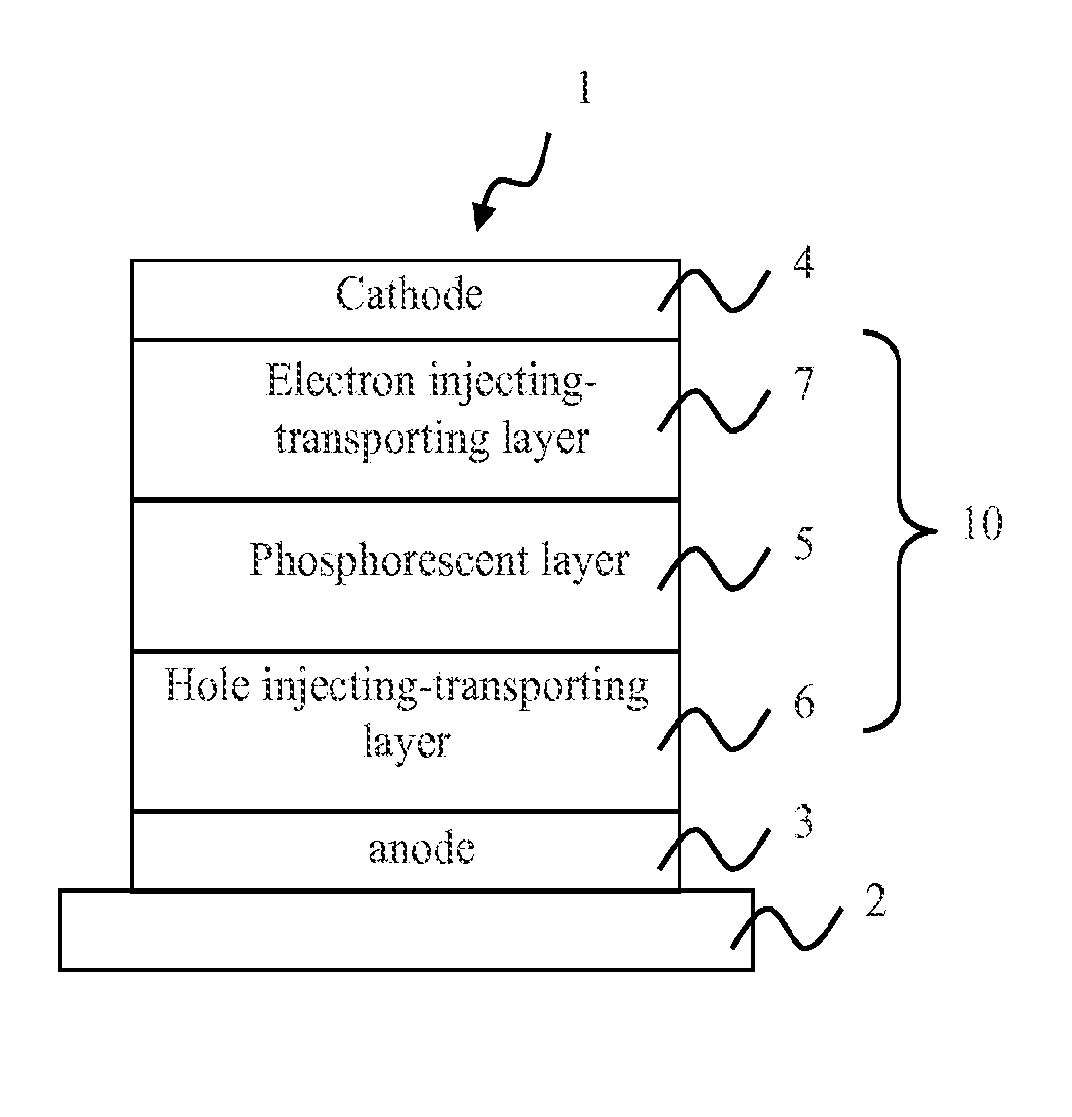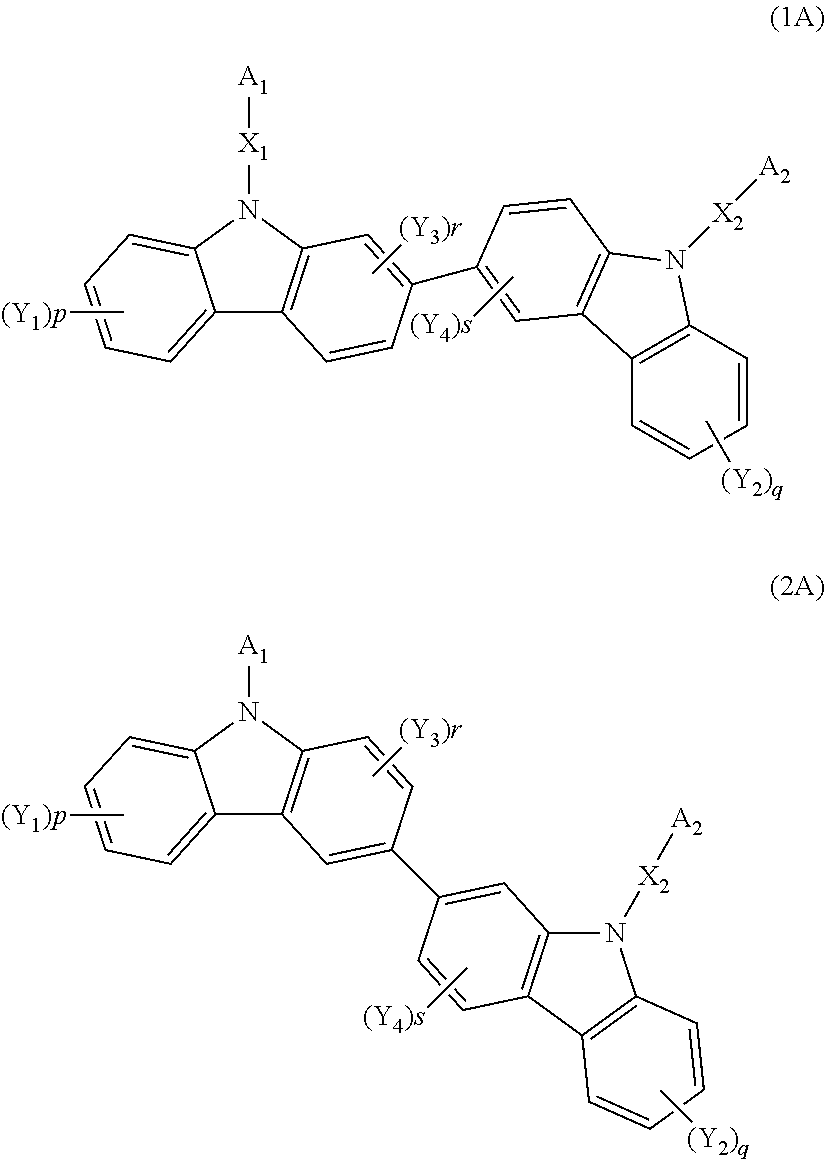Biscarbazole derivative host materials for OLED emissive region
a technology of emissive region and host material, which is applied in the field of organic electroluminescent devices, can solve the problems of cbp being easily deteriorated by, not suitable for practical use, and known to have a very short life, and achieves the effects of improving life time, low voltage requirement, and high luminous efficiency
- Summary
- Abstract
- Description
- Claims
- Application Information
AI Technical Summary
Benefits of technology
Problems solved by technology
Method used
Image
Examples
Embodiment Construction
[0074]The OLEDs of the present invention may comprise a plurality of layers located between an anode and a cathode. Representative OLEDs according to the invention include, but are not limited to, structures having constituent layers as described below:[0075](1) anode / light emitting layer / cathode;[0076](2) anode / hole injecting layer / light emitting layer / cathode;[0077](3) anode / light emitting layer / electron injecting⋅transporting layer / cathode;[0078](4) anode / hole injecting layer / light emitting layer / electron injecting⋅transporting layer / cathode;[0079](5) anode / organic semiconductor layer / light emitting layer / cathode;[0080](6) anode / organic semiconductor layer / electron blocking layer / light emitting layer / cathode;[0081](7) anode / organic semiconductor layer / light emitting layer / adhesion improving layer / cathode;[0082](8) anode / hole injecting⋅transporting layer / light emitting layer / electron injecting⋅transporting layer / cathode;[0083](9) anode / insulating layer / light emitting layer / insulat...
PUM
| Property | Measurement | Unit |
|---|---|---|
| quantum efficiency | aaaaa | aaaaa |
| quantum efficiency | aaaaa | aaaaa |
| internal quantum efficiencies | aaaaa | aaaaa |
Abstract
Description
Claims
Application Information
 Login to View More
Login to View More - R&D
- Intellectual Property
- Life Sciences
- Materials
- Tech Scout
- Unparalleled Data Quality
- Higher Quality Content
- 60% Fewer Hallucinations
Browse by: Latest US Patents, China's latest patents, Technical Efficacy Thesaurus, Application Domain, Technology Topic, Popular Technical Reports.
© 2025 PatSnap. All rights reserved.Legal|Privacy policy|Modern Slavery Act Transparency Statement|Sitemap|About US| Contact US: help@patsnap.com



